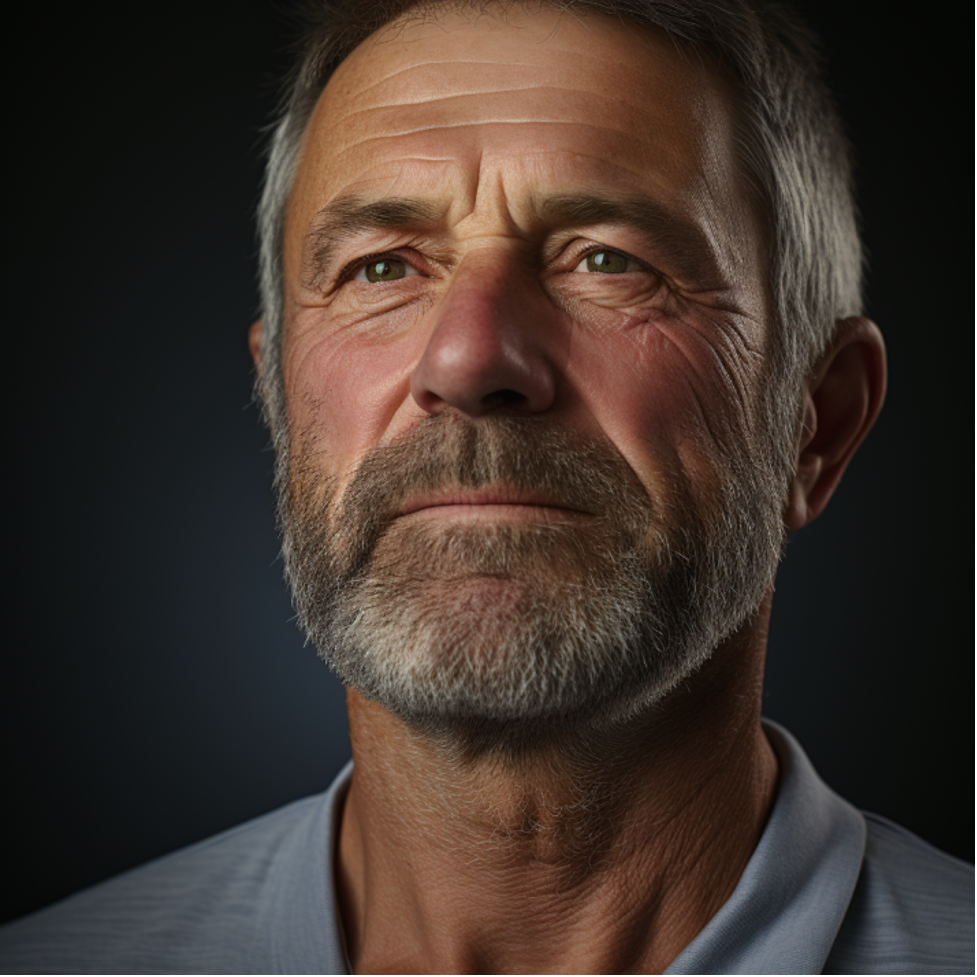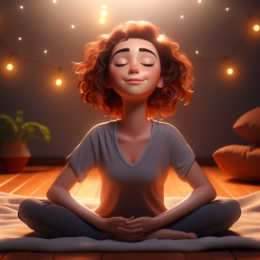How to Relieve Tension in Neck and Shoulders from Anxiety?

We thought you might like these too…
- Sensory Tools for Adult Anxiety: A Comprehensive Guide
- How to Help Someone with Anxiety Attacks: Understanding, Recognizing, and Assisting
- The Root Causes of Anxiety: Everything You Should Know
- High Anxiety: Poll Finds Americans Stressed by Inflation, War
- Six Simple Habits that Defeat Anxiety
We’ve all been there. You’re sitting at your desk, and suddenly you feel a sharp pain in your neck or a nagging tension in your shoulders. Could it be from that awkward sleeping position last night? Or perhaps it’s the result of hours spent hunched over your computer? While these are common culprits, there’s another factor that many overlook: anxiety.
Can Stress Cause Neck Pain and Tension in the Shoulders?
Absolutely. Recent studies have shown a direct correlation between stress, anxiety, and physical tension, especially in the neck and shoulders. When we’re anxious, our body’s fight-or-flight response kicks in, causing muscles to contract and tighten. Over time, this can lead to chronic pain and discomfort. For the elderly, the combination of depression and anxiety can exacerbate these symptoms, making it crucial to address both the mental and physical aspects of their well-being.
Quick Poll

8 Tips to Tackle Stress-Related Neck Pain
1. Mindful Breathing
Deep, controlled breaths can activate the body’s relaxation response. By focusing on your breathing, you divert attention away from stressors and bring a sense of calmness. This not only helps mentally but also physically by relaxing the tightened muscles.
2. Stretching
Regular stretching can improve flexibility and reduce muscle tension. Simple neck and shoulder stretches, done multiple times a day, can prevent stiffness and alleviate pain. For instance, gently tilting your head from side to side can stretch the sides of the neck.
3. Heat Therapy
Applying a warm compress or taking a warm shower can increase blood flow to the sore areas, promoting healing and relaxation. The warmth can penetrate deep into the muscles, relieving tension and spasms.
4. Massage
A professional massage can work wonders. It targets the deep layers of muscles and connective tissues, breaking down knots and improving blood circulation. Even self-massage techniques, using your hands or tools, can offer relief.
Statistics: Massage therapy has been found to reduce cortisol levels by up to 50%, providing potent stress relief.
5. Sensory Activities
Sensory activities like aromatherapy have been shown to reduce cortisol levels, the body’s primary stress hormone. Essential oils like lavender and chamomile can induce a state of relaxation, reducing muscle tension.
6. Maintain Good Posture
An ergonomically set up workstation can prevent undue strain on your neck and shoulders. Ensure your computer screen is at eye level and your chair supports the natural curve of your spine.
7. Stay Active
Physical activity releases endorphins, the body’s natural painkillers. Even a short walk can reduce muscle tension and alleviate stress. Regular exercise can also improve sleep quality, another factor in managing stress and anxiety symptoms.
8. Seek Professional Help
Persistent anxiety can lead to chronic pain. Therapists or counselors can provide coping strategies and cognitive-behavioral techniques to manage anxiety, subsequently reducing physical symptoms.
Other Ways to Reduce Stress-Related Tension in Your Neck and Shoulders
Meet Clara, a 68-year-old retired teacher. Clara began experiencing severe neck and shoulder pain shortly after her husband was diagnosed with Alzheimer’s. She initially attributed it to age but soon realized that her anxiety about her husband’s condition was the primary culprit.
To manage her symptoms, Clara explored various therapies:
- Acupuncture: This ancient Chinese therapy involves inserting thin needles into specific points on the body. It’s believed to balance the body’s energy and has been shown to reduce pain and muscle tension.
- Yoga: Yoga combines physical postures, breathing exercises, and meditation. It enhances flexibility, strength, and balance. Clara found that specific poses, like the “Child’s Pose,” helped stretch and relax her neck and shoulders.
- Biofeedback: Clara learned to control physiological functions such as muscle tension using biofeedback. By being aware of her body’s response to stress, she could consciously relax her muscles.
- Mindfulness Meditation: Focusing on the present moment, Clara learned to let go of her worries, reducing the mental stress that contributed to her physical pain.
While these methods worked for Clara, it’s essential to find what works best for you. Everyone’s journey with stress and anxiety relief is unique. Remember to consult with healthcare professionals before starting any new therapy or treatment.
Personal Question:
Tips for Managing Stress and Anxiety
- Stay Connected: Talk to friends and family about your feelings.
- Limit Stimulants: Reduce caffeine and sugar intake.
- Practice Relaxation Techniques: Meditation and deep breathing exercises can help calm anxiety.
- Stay Informed but Not Overwhelmed: While being informed is essential, avoid excessive exposure to distressing news.
- Seek Professional Guidance: Consider therapy or counseling to learn how to control anxiety.
Statistics: Physical symptoms of anxiety and stress account for an estimated 20% of all primary care doctor visits in the United States.
Final Thoughts
Tension in the neck and shoulders from anxiety is a real and prevalent issue. By understanding the connection between mental and physical health, we can take proactive steps to alleviate pain and improve our overall well-being. Remember Clara’s story and consider what methods might work best for you.
References:
- Anxiety and Depression Association of America. (2021). Facts & Statistics. Retrieved from https://adaa.org/about-adaa/press-room/facts-statistics
- Tang, Y. Y., & Posner, M. I. (2013). Special issue on mindfulness neuroscience. Social Cognitive and Affective Neuroscience, 8(1), 1–3. https://doi.org/10.1093/scan/nss104
- Moyer, C. A., Rounds, J., & Hannum, J. W. (2004). A Meta-Analysis of Massage Therapy Research. Psychological Bulletin, 130(1), 3–18. https://psycnet.apa.org/doiLanding?doi=10.1037%2F0033-2909.130.1.3
- Peper, E., Harvey, R., Mason, L., & Lin, I. M. (2018). Do Better in Math: How Your Body Posture May Change Stereotype Threat Response. NeuroRegulation, 5(2), 67–74. https://doi.org/10.15540/nr.5.2.67
- Bandelow, B., Michaelis, S., & Wedekind, D. (2017). Treatment of anxiety disorders. Dialogues in Clinical Neuroscience, 19(2), 93–107. https://www.ncbi.nlm.nih.gov/pmc/articles/PMC5573566/
- Hannibal, K. E., & Bishop, M. D. (2014). Chronic Stress, Cortisol Dysfunction, and Pain: A Psychoneuroendocrine Rationale for Stress Management in Pain Rehabilitation. Physical Therapy, 94(12), 1816–1825. https://doi.org/10.2522/ptj.20130597
- Tsai, P. S., Wang, S. Y., Wang, M. Y., Su, C. T., Yang, T. T., Huang, C. J., & Fang, S. C. (2005). Psychometric evaluation of the Chinese version of the Pittsburgh Sleep Quality Index (CPSQI) in primary insomnia and control subjects. Quality of Life Research, 14(8), 1943–1952. https://doi.org/10.1007/s11136-005-4346-x




